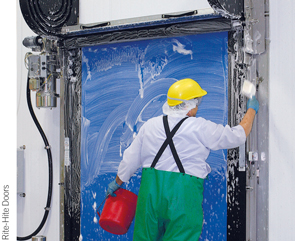The combination of technological advancements, increased regulation, and efficiency initiatives has transformed many industries, but perhaps none more than food manufacturing and processing.
 Good Manufacturing Practices (GMPs)—as written law—have officially been around since 1962. However, they are continually evolving as new equipment and processes are developed. Sometimes they are changed as the result of other regulations being implemented, which happened recently when the Food Safety Modernization Act (FSMA) was enacted earlier this decade.
Good Manufacturing Practices (GMPs)—as written law—have officially been around since 1962. However, they are continually evolving as new equipment and processes are developed. Sometimes they are changed as the result of other regulations being implemented, which happened recently when the Food Safety Modernization Act (FSMA) was enacted earlier this decade.
Suddenly GMPs weren’t just Part 111 in the Code of Federal Regulations (CFR). FSMA’s Preventative Controls for Human Food in Title 21 CFR Part 117 mandates rules that are enforced by FDA. Subpart B spells out specific GMPs that all food operators must adhere to.
Knowing Your GMPs
For food operations, it’s important to know all of the GMPs that FDA audits. Here are seven that are the most commonly audited, yet easiest to comply with.
- It starts with Part 117.10 Personnel. Essentially, this one boils down to keeping out anyone with illnesses and open wounds who might spread a disease. It offers rules of cleanliness—washing hands and wearing hairnets when appropriate—as well as education/training and supervision standards.
- Part 117.20 Plant and grounds requires facilities to maintain the grounds to minimize potential sources of contamination, including proper drainage to reduce breeding areas for pests. Subsection B mandates that facilities must consider plant construction and design, including ways personnel can continue to maintain the facility regularly.
- Hygiene for the facility and the equipment inside the facility are covered in Part 117.35 Sanitary operations. This means that pests must be controlled and that the cleaning compounds and sanitizing agents used inside the facility are stored properly.
- In connection to sanitary operations, Part 117.37 Sanitary facilities and controls mandates that facilities have the equipment needed on hand to keep operations clean. This ranges from a basic water supply and plumbing to sewage and a rubbish and offal disposal.
- Part 117.40 Equipment and utensils requires that all plant equipment used in manufacturing, processing, and packaging must be designed in such a way that it can be adequately cleaned and maintained to protect against allergen cross-contact and contamination.
- The manufacturing and processing portion of Part 117.80 Processes and controls mandates that clean equipment be used and that conditions are kept to minimize the growth of microorganisms.
- According to Part 117.93 Warehouse and distribution, the storage and transportation of food must be under conditions that will protect against allergen cross-contact, food contamination, and food and container deterioration.
Once these regulations are understood, facility managers should apply them to their specific situation. Since cleanliness and temperature controls are essential in most food operations, it’s important to explore the often-overlooked equipment that separates various critical environments: doors and walls.
The Role of High-Speed Doors

The new generation of cGMP-compliant doors are highly resistant to mold and have superior wash-down qualities.
High-speed doors and fabric curtain walls play a key role in maintaining clean operations and food product integrity. These high-performance doors feature a minimum opening rate of 32 inches per second, a minimum closing rate of 24 inches per second, and a means to automatically reclose the door. Designed to address food facility needs for environmental control, productivity, and safety (as well as cleanliness), they are used not only to prevent cross-contamination, but also to help improve air circulation rates and optimal operating efficiency.
FDA standards outline recommendations and requirements for manufacturers. The starting point is to look for doors compliant with cGMPs.
Key considerations for any door configuration are ease of cleaning and durability. Especially in food operation cases, doors must be able to stand up to repeated cleaning with chemical solvents and have a smooth, nonporous surface that is resistant to microbial and fungal growth. Doors should have tapered surfaces that essentially eliminate harborage of dust or other contaminants and possess no sharp angles to minimize harborage of microbes.
ACCESS THE FULL VERSION OF THIS ARTICLE
To view this article and gain unlimited access to premium content on the FQ&S website, register for your FREE account. Build your profile and create a personalized experience today! Sign up is easy!
GET STARTED
Already have an account? LOGIN

